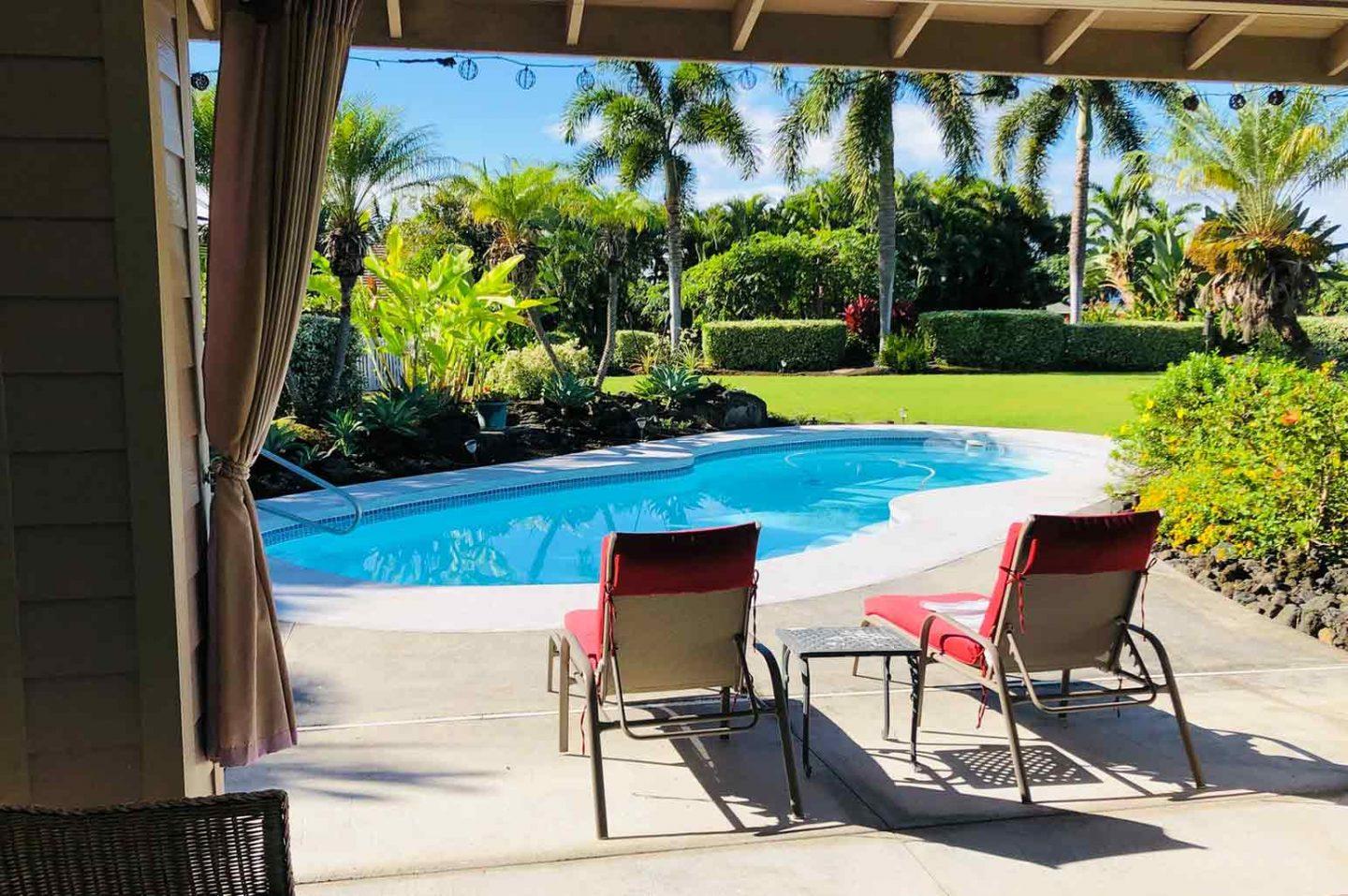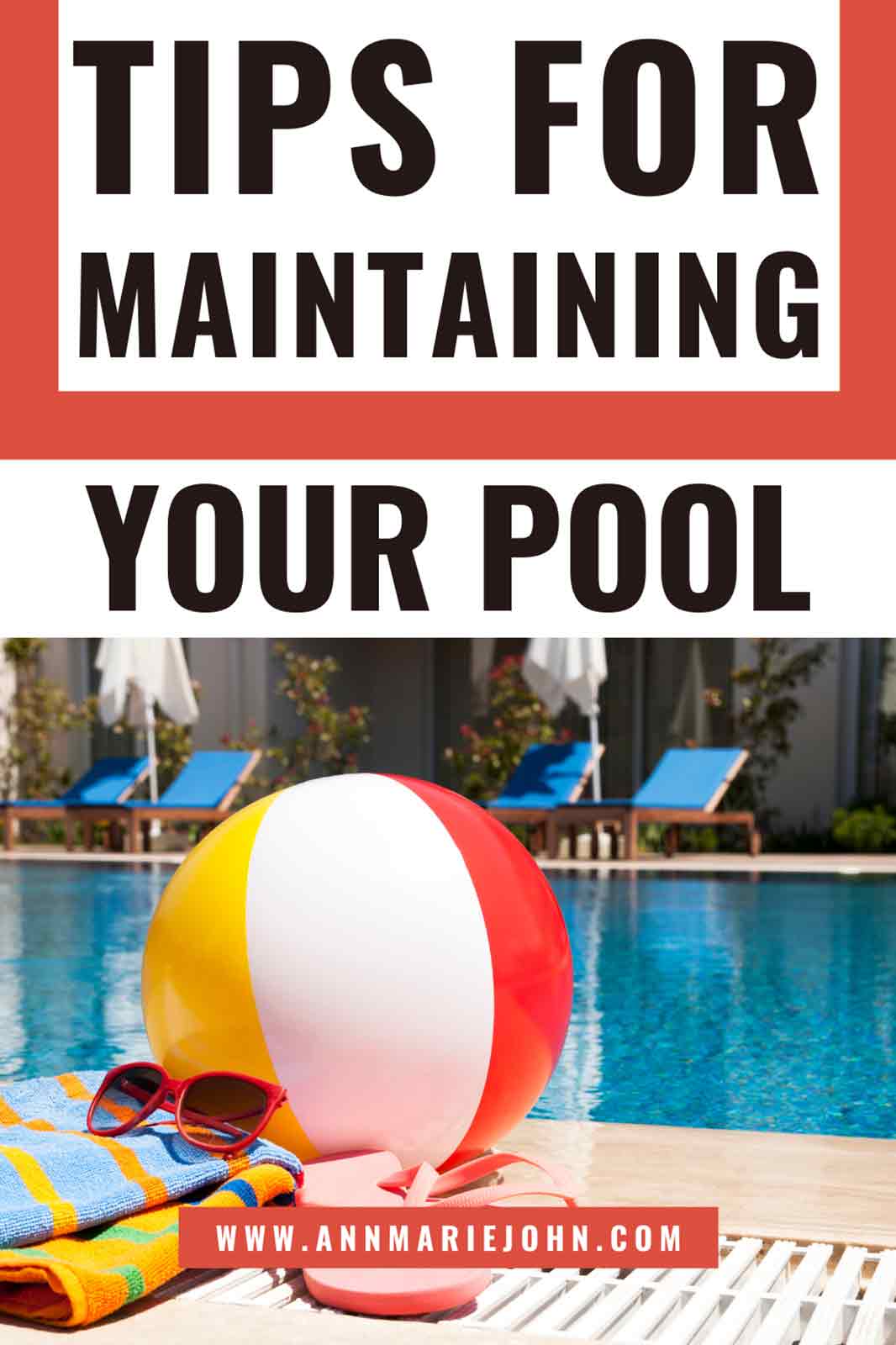
As a homeowner, it’s vital to maintain your pool to ensure it remains clean and is safe for your family members to swim in during the warmer months of the year. The water requires frequent cleaning by removing all particles and debris to ensure it sparkles and looks beautiful. Suppose you want to maintain the water properly to get plenty of use out of it. In that case, there are a few essential tips to follow to avoid potential issues.

- Consistently Clean Your Pool Filter
One of the most critical steps to take with maintaining your pool is to clean the filter consistently to remove debris that accumulates. Failing to clean out the filter can prevent the water from flowing freely and can lead to excess wear and tear on your pump as it works harder than necessary to operate.
Sand filters are known to be low-maintenance and easy to maintain, only requiring cleaning once every four weeks. You can also install cartridge filters, which collect more debris than sand filters and can be hosed out every one to three weeks. If you want the cleanest water possible, diatomaceous earth (DE) filters work well and have to be cleaned out once a month.
Skimming the water is considered to be the most efficient and easiest way of cleaning the pool water. It can prevent your pump from working too hard throughout the week. Most pool experts recommend skimming the surface of the water once each day with an oversized skimmer.
If you have an above ground kit pool, purchasing a pool cover will also prove effective by keeping small leaves and debris out of the water when it’s not in use. This will reduce how many chemicals are needed and prevent too much water from evaporating warmly. Many homeowners choose to invest in automatic pool covers because of how easy they are to use. You can expand the cover over the water with a push of a button without having to stretch it across the pool manually.
Understand the expenses involved before getting started with your pool maintenance. On average, you could pay between $3,000 and $5,000 a year on water, electricity, cleaning, and maintenance.
- Constantly Scrub Your Pool
It’s also important to scrub the surrounding surfacing to remove any stains or algae that are present. You can also thoroughly clean paving and decking before the start of the summer season, which will make it easy to determine if any repairs are needed.
Consistently cleaning the pool is crucial by using a robotic cleaner, which should operate six to eight hours each day. Brushing and vacuuming the different surfaces by hand will also provide a deep clean and can allow you to remove grime in hard-to-reach areas. You can scrub the walls every two weeks to prevent algae from developing on the surface.
Adding a few tennis balls to the pool will also allow sunscreen and makeup to absorb the materials to keep the water cleaner.
- Maintain Chemical Balance
The chemicals in your pool need to be correctly balanced to ensure the water is safe to swim in throughout the summer season. Check the chemicals every two weeks and test the pH, calcium hardness, stabilizer level, chlorine, and alkalinity, which is an integral part of your outdoor pool maintenance. The pH level should be 7.0 to 7.8, and the alkalinity should be 60 to 200 parts per million. Pool shock will work well for immediately killing off any bacteria that is present in the water. The number of gallons of water will influence how much shock is needed. Consider adding shock after a heavy rainstorm or when the chlorine levels are low, which will allow you to add five to 10 PPM to ensure all contaminants are removed.
Purchase a chemical kit, which will allow you to utilize different vials and charts to ensure you can check the water levels at any time. Keep all chemicals stored away and out of reach of children when they’re not in use. Pool stabilizers also work well for reducing the loss of chlorine from the sun’s rays.
- Maintain the Water Level
Many people don’t realize that the pool’s water naturally starts to get lower the more you spend time in it. As you splash and do cannonballs, it can cause water to splash out, which requires adding more of it to maintain the proper level.
Evaporation will also lead to water loss, especially during the warmer seasons. The water should be 1/3 and ½ way up the opening of your pool skimmer.
- Check Your Pool Fence
Inspections also need to be a part of your pool care routine to ensure everything is in working order. Examine all safety equipment that is in use around the pool to reduce the risk of an accident. It’s vital to assess whether your pool fence needs replacing for the safety of everyone that uses your pool.
Inspect the closing latch or lock on the fence to ensure it’s operating well and doesn’t show any signs of wear. The gap at the bottom of the pool fence shouldn’t be any more than 10 cm. The gate should also be capable of opening outward from the fence and have solid tension-adjustable hinges. Attempt to shake the gate to ensure the gate latch doesn’t pop open.
Schedule a professional inspection once each year to ensure an expert thoroughly inspects all the equipment and parts to determine if any repairs may be needed. It’s also essential to remove any objects near the pool, like tables or chairs that children or pets can attempt to use to climb over your pool fence.
Knowing the right tips to follow for the pool maintenance you perform will allow you to get more use out of the feature and have a great way of cooling off from the heat. It can also reduce the risk of expensive repairs and reduce your pool maintenance cost to ensure you can save more money each year.

